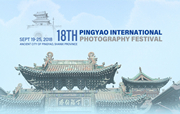News
The 'Way' to Shanxi
Updated: 2015-08-17By Marcel Schneider ( chinadaily.com.cn)
Having finally arrived, I become one with the scenery of Shanxi, exploring my way through Qiao's majestic courtyard, balancing through the narrow corridors of the Hanging Monastery or crouching into the Buddhist grottoes at Yungang. In Pingyao, the 700-year-old city walls still surround more than 4,000 exquisitely preserved residences from the Ming and Qing Dynasties (1368-1911) and allow a glimpse into the urban planning of China's past.
Even though it is pouring with rain on Wutai Mountain, my eyes cannot miss the remarkable cluster of ancient Buddhist architecture. While climbing the stairs to the temples, small streams and rivers of rainwater take their course to the valley below, not forgetting to soak the fabric of my newly bought shoes.
My feet start to feel cold, yet my eyes open wider and my heart fills with pleasant warmth and well-being. I let myself plunge into a landscape of harmonious beauty, a reproduction of various elements that results in a large, overall impression. The qiyun, inner life, which emerges before my mind’s eye, in contrast, tries to capture both the breath of Shanxi and the impression of the province’s soul.
My way is taking its course. It must be somewhere out there, this way that I deliberately or unconsciously follow, this stillness and inaction that apparently leads to a higher level of existence and self-awareness. I realize that if one is quiet, one can be heard. "Marcel, Marcel!" I hear a colleague say after a long sleep on the train, "Wake up, we're back in Beijing."

Pingyao Wantuo
Wantuo, a type of noodle from the Qing Dynasty (1644-1911), is one of Pingyao's local snacks with a long history.


